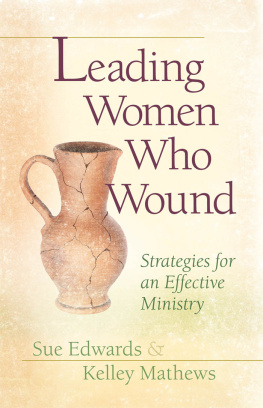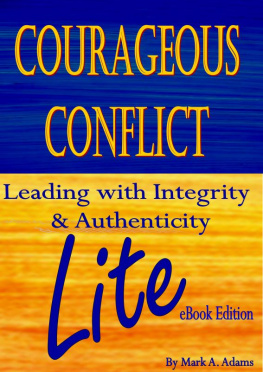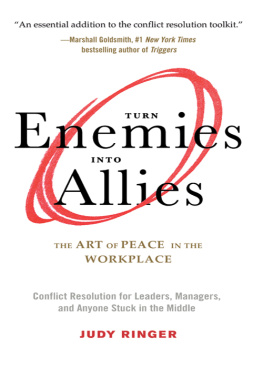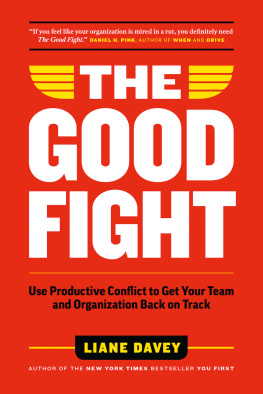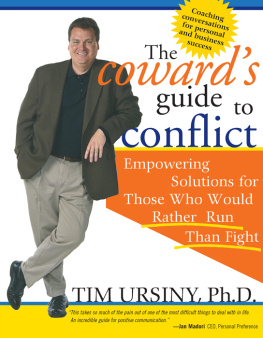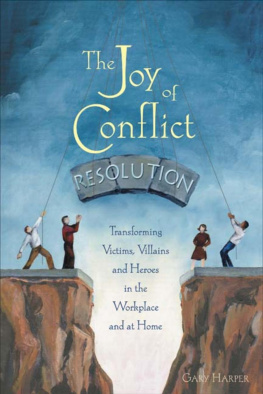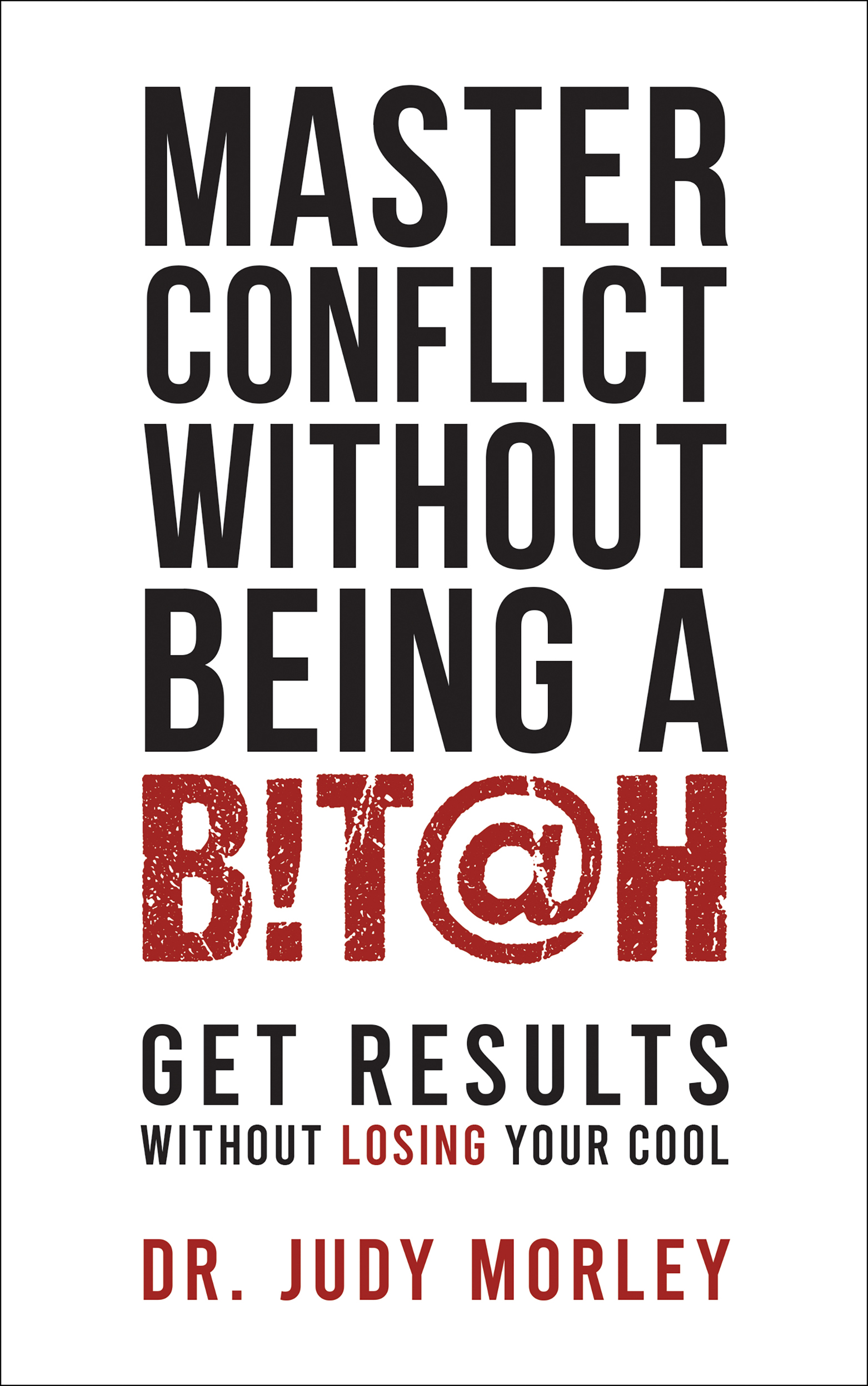Contents
Guide
Pagebreaks of the Print Version
Also by Dr. Judy Morley
___
5 Spiritual Steps to Overcome Adversity
The Leadership Constant
MASTER
CONFLICT
WITHOUT
BEING A
B!T@H
GET RESULTS
WITHOUT LOSING YOUR COOL
DR. JUDY MORLEY


Published 2023 by Gildan Media LLC
aka G&D Media
www.GandDmedia.com
MASTER CONFLICT WITHOUT BEING A B!T@H. Copyright 2023 by Dr. Judy Morley. All rights reserved.
No part of this book may be used, reproduced or transmitted in any manner whatsoever, by any means (electronic, photocopying, recording, or otherwise), without the prior written permission of the author, except in the case of brief quotations embodied in critical articles and reviews. No liability is assumed with respect to the use of the information contained within. Although every precaution has been taken, the author and publisher assume no liability for errors or omissions. Neither is any liability assumed for damages resulting from the use of the information contained herein.
FIRST EDITION 2023
Interior design by Meghan Day Healey of Story Horse, LLC
Library of Congress Cataloging-in-Publication Data is available upon request
eISBN: 978-1-7225-2759-4
10 9 8 7 6 5 4 3 2 1
CONTENTS
THE ART OF CONFLICT
Let me guess. You hate conflict. You avoid it at all costs. To dodge it, you agree to do things you dont want to do. To deflect it, you lie to your significant other and say everything is fine when in fact youre upset. You stay mad at people for years rather than resolve the underlying issue because you dont want to create conflict.
Congratulations! You are completely normal. The problem is that while avoiding conflict makes you normal, it doesnt make you an effective friend, partner, community member, or, most importantly for the purposes of this book, leader.
Humans are hard-wired to fear conflict. When we lived in tribes, avoiding conflict was a survival mechanism. Its understandable to fear confrontation when the safety of the tribe is at stake. Humans have elaborate emotional systems to keep them safe, and fear is a vital part of those systems. The fight-or-flight response is the most common conflict avoidance mechanism, and it is triggered by any real or perceived threat.
Being hardwired to fear conflict, unfortunately, doesnt keep it from happening. The immediate threat may no longer be a fight with a saber-toothed tiger, but you are surrounded every day by potential conflict situations. From traffic altercations to family tension to workplace strife, day-to-day interactions are rife with opportunities for disagreements. As a matter of fact, differences of opinion are a hallmark of being human. Consequently, one of the most valuable skills a personespecially a leadercan learn is how to navigate conflict gracefully.
Leadership matters most when there is no agreement about how to move forward. Experts on leadership study war heroes because they led teams through stressful, rapidly changing circumstances. In these situations, everybody has an opinion, and no one seems to agree. The complications double if there is potential for conflict within the organization while facing external challenges. The most successful leaders navigate conflict without drama and confrontation.
I didnt fully appreciate the importance of gracefully handling conflict until I was in my early forties. For most of my life, I avoided conflict at all costs. Growing up in a dysfunctional, alcoholic household, I feared confrontation at a visceral level. Although I had had a successful career in multiple industries, I managed to succeed with going along to get along, even if it weakened my results.
After years of exposure to corporate politics, I craved a calm and peaceful workplace. I decided to find a job where everyone got along. Ha! In my quest for a conflict-free workplace, I joined a spiritual nonprofit organization. I figured their peaceful, self-affirming philosophy ensured workplace harmony. When the nonprofits headquarters moved to my hometown, I immediately got a job on the executive team. I loved that I could have my office filled with candles, om signs, peace symbols, and puffy cushions. I thought Id finally found a workplace that would keep me free from conflict.
Was I in for a surprise! I learned firsthand that no matter how peaceful, lofty, and virtuous an organizations vision is, any company made up of humans has conflict. Within a few months, the organization announced it had serious financial challenges. Additionally, the move to a new office in a new city, with a completely new staff, led to confusion and upheaval on a grand scale. Finally, the company was in the process of merging with a group that had split from it fifty years earlier, so the process of coming back together reignited the contentious issues that had originally caused the separation.
I stayed in that position for seven years. When I left, the organization was financially prosperous, the move was a success, and the merger was complete. The greatest benefit for me, however, was that I got extremely comfortable with daily conflict. Since then, Ive been fortunate to work with organizations, both for-profit and nonprofit, going through similar challenges. My clients have been predominantly women thrown into the midst of leadership dilemmas and feeling unprepared for them. Ive consistently seen that leaders who can skillfully navigate conflict turn it into a creative, productive, and catalytic force. When conflict isnt handled well, it becomes toxic and destructive.
The most valuable lesson from these experiences was this: maneuvering conflict has less to do with circumstances than mindset. I cant find peace by trying to control the situation around me. Peace comes when I adjust my own attitude. Then I can be in the midst of conflict without being consumed by it. Handling conflict successfully starts with understanding personal beliefs, behaviors, triggers, and hot buttons. Once youre an expert on your internal emotional environment, you can effortlessly master conflict without being a bitch.
Why We Need Conflict
Although it may seem counterintuitive, conflict is a necessary component of peaceful, successful organizations. In his classic book The Five Dysfunctions of a Team, author Patrick Lencioni cited a lack of conflict as a major dysfunction. Healthy teams need conflict to be proactive, creative, and productive. The same goes for healthy relationships, communities, and families. Healthy conflict isnt intense or threatening. It can be as benign as a small difference of opinion, but its necessary for evolution. Without conflict, nothing grows.
Think about the most contentious situations youve faced. They may have been uncomfortable, even painful, experiences, but in hindsight you probably realized that they provided powerful wisdom and valuable lessons. The perspective of time shows that conflict was the very thing necessary to achieve greater success. Theres a reason that every great movie, novel, or play has conflict at its heart. Without conflict, characters dont grow, life doesnt evolve, and no one cares.



